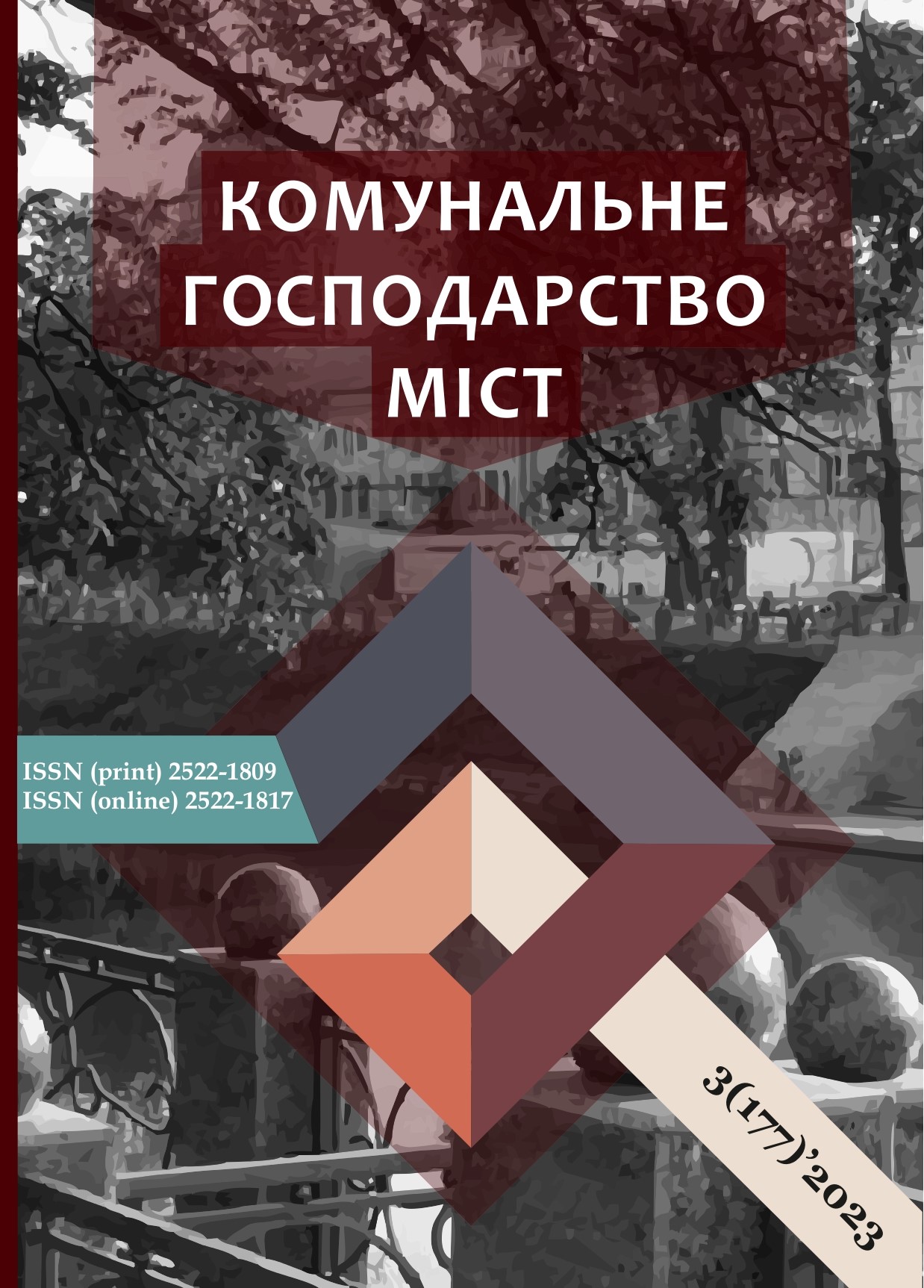CONCEPTS OF THREAT AND RISK. THEIR COMMON FEATURES AND PRINCIPAL DIFFERENCES (CONCERNING NUCLEAR AND OTHER STRATEGIC OBJECTS)
DOI:
https://doi.org/10.33042/2522-1809-2023-3-177-153-158Keywords:
critical infrastructure object, nuclear object, terror, dangerous object, protection, conceptAbstract
The work systematizes numerous interpretations of the concepts of threats and risks. It is shown that in relation to a strategic nuclear facility, existing threats and risks to it are strictly connected by a triangular functional scheme. Threats that may appear in the form of certain catastrophic events at a specific nuclear facility are assessed by the risk (probability) of the occurrence of a certain catastrophic event under selected conditions at this facility using specially developed methods.
The independence of the state is determined by its ability to preserve its territorial integrity and national security, cultural values and national assets, state potentials and the identity of ethnic peoples.
The problem is to determine the epistemological connections between the concepts of threats and risks in relation to nuclear facilities, which in practice ensures a competent assessment of the surrounding environment, the creation of a reliable model of threats and ensuring the reliable safety of a specific nuclear facility.
Based on the above, the purpose of this article is to systematize numerical interpretations of the concepts of threats and risks in relation to the security of strategic nuclear facilities.
To achieve the set goal, it is necessary to solve the following scientific tasks: first, to analyze the concept of danger; secondly, consider the interpretation of the term risk; thirdly, to describe the relationship between a strategic nuclear facility, a threat, and a risk.
Based on the above, the strategic nuclear facility, its objectively existing threats and risks are strictly connected by a triangular functional scheme. Threats that may appear in the form of certain catastrophic events at a specific nuclear facility are assessed by the risk (probability) of the occurrence of a certain catastrophic event under selected conditions at this facility using specially developed methods.
The application of these logical relationships will allow not only to improve the existing methods of calculating the risks of catastrophic events occurring at nuclear facilities, but also to develop new models of emergency management at technological facilities.
References
Kliuchove zavdannia nashoi derzhavy (n.d.) Speeches. Retrieved from: https://www.president. gov.ua/news/speeches
Azarenko E.V., Honcharenko Yu. Iu., Dyvyzyniuk M.M., Ozhyhanova M.Y. (2018) Zashchyta krytycheskoi ynfrastrukturы hosudarstva ot terrorystycheskoho vozdeistvyia Kyiv: YHNS NANU, 84 s. (ISBN 978-617-7187-25-6).
Azarenko E.V., Honcharenko Yu. Iu., Dyvyzyniuk M.M., Lazarenko S.V., Ozhyhanova M.Y. (2019) Ynformatsyonno-tekhnycheskye metodы predotvrashchenyia chrezvыchainыkh sytuatsyi terrorystycheskoho kharaktera na obъektakh krytycheskoi ynfrastrukturы. Chast 1. S yspolzovanyem aktyvnыkh ympulsnыkh radyolokatsyonnыkh sredstv Monohrafyia. Kyiv: YHNS NANU. 164 s. ISBN 978-617-7187-33-1
Diviziniuk M.M., Yeremenko S.A., Lieftierov O.A., Pruskyi A.V., Strilets V.V., Strilets V.M., Shevchenko R.I. (2022) Teoretychny zasady paradyhmy «tsyvilnyi zakhyst». Monohrafiia. Kyiv.: TOV «AZYMUT-PRINT». 335 s. (ISBN 978-617-8015-20-6).
Chto takoe yadernыi obъekt. (n.d.) National Center of Legal Information of the Republic of Belarus. Retrieved from: http://multilang.etalonline.by/ru/Term/Index/26809?langName=ru&size=25&page=1&ch=%D0%AF&type=3
Yadernaia ustanovka. (n.d.) Wikipedia. Retrieved from: https://ru.wikipedia.org/wiki/Ядерная_установка#:~:text=Ядерная%20установка%20(англ.,во%20внимание%20вопросы%20ядерной%20безопасности.
Konventsyia o fyzycheskoi zashchyte yadernoho materyala y yadernыkh ustanovok. (n.d.) Retrieved from: https://www.un.org/ru/documents/decl_conv/conventions/nucmat_protection.shtml
Law of Ukraine «On Physical Protection of Nuclear Installations, Nuclear Materials, Radioactive Waste, Other Sources of Ionizing Radiation» (n.d.) Verkhovna Rada of Ukraine. Retrieved from: https://zakon.rada.gov.ua/laws/show/2064-14#Text
Zahroza. (n.d.) Wikipedia. Retrieved from: https://uk.wikipedia.org/wiki/Загроза
Makarova N.E. (2017) Concept, types, and value of the threat as part of criminal activity. Vestnik of the St. Petersburg University of the Ministry of Internal Affairs of Russia. № 4 (76). Retrieved from: https://cyberleninka.ru/article/n/ponyatie-vidy-i-znachenie-ugrozy-kak-elementa-prestupnoy-deyatelnosti/viewer
Opasnost. (n.d.) Wikipedia. Retrieved from: https://ru.wikipedia.org/wiki/Опасность
Pro osnovy natsionalnoi bezpeky Ukrainy. Fond derzhavnoho maina Ukrainy. Retrieved from:
https://www.spfu.gov.ua/ua/documents/1819.html
Vozmozhnost. (n.d.) Wikipedia. Retrieved from: https://ru.wikipedia.org/wiki/Возможность
Zashchyta krytycheskoi ynfrastrukturы. Podkhodы hosudarstv Evropeiskoho Soiuza k opredelenyiu эlementov krytycheskoi ynfrastrukturы. (2015) Tekst dlia kursov, podhotavlyvaemыkh v ramkakh sotrudnychestva Cheshskaia Respublyka. Moldavyia. Tekhnycheskyi Unyversytet Ostrava, 60 s.
Rysk (n.d.) Wikipedia. Retrieved from: https://ru.wikipedia.org/wiki/Риск
Эtymolohycheskyi onlain-slovar russkoho yazыka Maksa Fasmera. LGΩ. Retrieved from: https://lexicography.online/etymology/vasmer/
Orlov A.Y. (2004) Эkonometryka. 412 s. Retrieved from: https://institutiones.com/download/books/1647-ekonometrika-orlov.html
Lytovskykh A. (n.d.) Fynansovыi menedzhment. Lytovskykh. Retrieved from: http://web.krao.kg/7_menejment/0_pdf/3.pdf
Karmyzov M.V., Linkov A.V. (n.d.) Otsenka ryskov v systeme upravlenyia bezopasnostiu poletov. Nauchnыi vestnyk MHTU HA. Retrieved from: https://cyberleninka.ru/article/n/otsenka-riskov-v-sisteme-upravleniya-be zopasnostyu-poletov
Downloads
Published
How to Cite
Issue
Section
License
The authors who publish in this collection agree with the following terms:
• The authors reserve the right to authorship of their work and give the magazine the right to first publish this work under the terms of license CC BY-NC-ND 4.0 (with the Designation of Authorship - Non-Commercial - Without Derivatives 4.0 International), which allows others to freely distribute the published work with a mandatory reference to the authors of the original work and the first publication of the work in this magazine.
• Authors have the right to make independent extra-exclusive work agreements in the form in which they were published by this magazine (for example, posting work in an electronic repository of an institution or publishing as part of a monograph), provided that the link to the first publication of the work in this journal is maintained. .
• Journal policy allows and encourages the publication of manuscripts on the Internet (for example, in institutions' repositories or on personal websites), both before the publication of this manuscript and during its editorial work, as it contributes to the emergence of productive scientific discussion and positively affects the efficiency and dynamics of the citation of the published work (see The Effect of Open Access).

